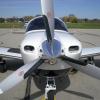CHTs too cold?
-
Members Online
- VetRepp
- MDMooney
- N201MKTurbo
- TangoTango
- 47U
- MikeOH
- Thedude
- ta2too
- rklems
- Dream to fly
- Rick Junkin
- Jay Bird
- Cfidave
- MBDiagMan
- DXB
- Martin S.
- IvanP
- Yetti
- steve s
- ad5ut
- V1VRV2
- Justin Schmidt
- hammdo
- Echo
- Marc_B
- IgorD
- hypertech
- flat_function
- MooneyMax
- hazek
- WestTX20J
- AH-1 Cobra Pilot
- DCarlton
- bluehighwayflyer
- LANCECASPER
- AndreiC


Recommended Posts